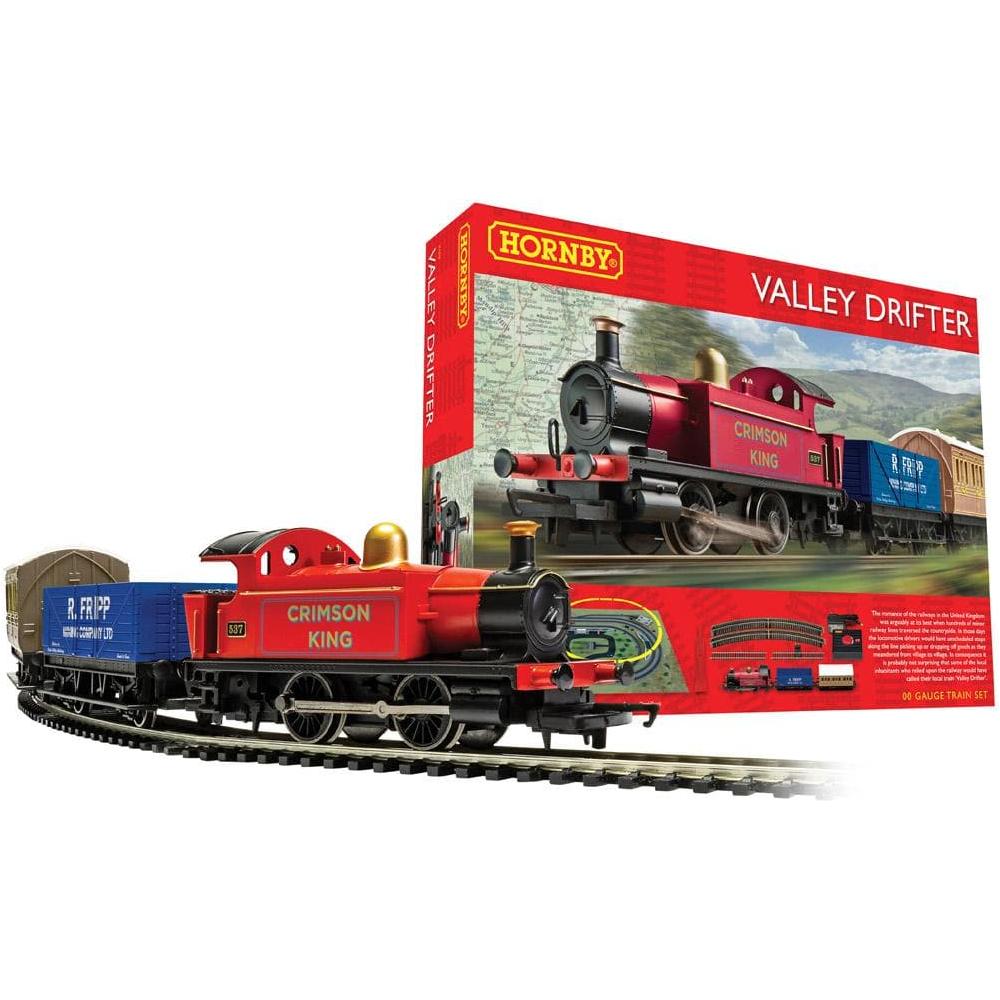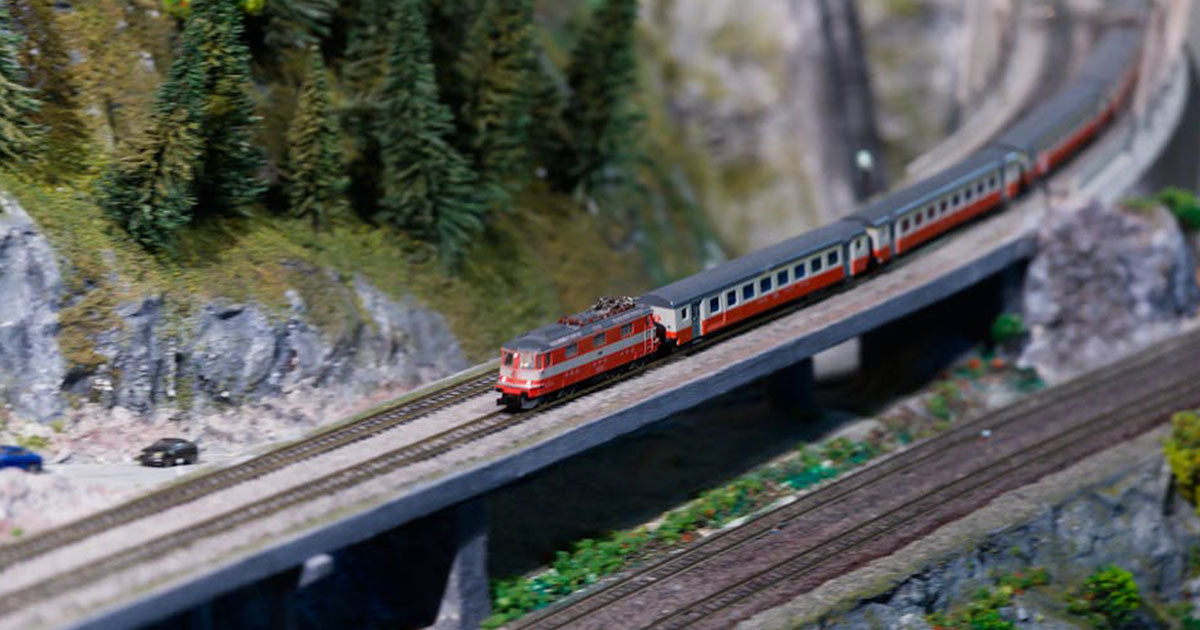Choosing the Right Scale: HO vs OO vs N vs TT
A comprehensive guide to model railway scales for every enthusiast
The world of model railways offers a fascinating journey into miniature engineering, where the choice of scale plays a pivotal role in shaping your experience. From the globally popular HO scale locomotives to the space-efficient N scale, each option presents unique characteristics that cater to different preferences and requirements. Whether you're a seasoned enthusiast or just beginning your model railway adventure, understanding these scales is crucial for creating your ideal layout.
| Model Railway Scales at a Glance | ||||
|---|---|---|---|---|
| Scale | Ratio | Space Requirements | Key Features | Best Suited For |
| HO Scale | 1:87 | Medium | Most extensive range of products; excellent detail-to-size ratio | Beginners to experts; ideal for home layouts |
| OO Scale | 1:76 | Medium-Large | British prototype accuracy; compatible with HO track | British railway enthusiasts; detail-oriented modellers |
| N Scale | 1:160 | Small | Compact size; perfect for extensive layouts in limited space | Space-conscious modellers; complex layout enthusiasts |
| TT Scale | 1:120 | Medium | Perfect middle-ground between HO and N; growing popularity | Modellers seeking balance between size and detail |
Understanding the Key Model Railway Scales

The fascinating world of model railways opens up endless possibilities for creativity and precision engineering. Selecting the appropriate scale isn't merely about size considerations—it's about crafting an experience that perfectly aligns with your modelling aspirations, available space, and desired level of detail. Whether you're drawn to the versatile HO scale or the compact elegance of N scale, each option presents its own unique characteristics and opportunities for creating remarkable layouts.
HO Scale: The Perfect Balance
At a ratio of 1:87, HO scale has earned its position as the most widely embraced model railway scale globally. This popularity isn't merely coincidental—it stems from the scale's remarkable ability to strike an optimal balance between size and detail. For enthusiasts seeking to create intricate layouts without requiring vast spaces, HO scale presents an ideal solution.
The scale's versatility extends beyond its size advantages. With an extensive range of rolling stock and accessories available, HO scale offers unparalleled opportunities for customisation and creativity. The manufacturing precision at this scale allows for exceptional detail whilst maintaining durability, making it particularly suitable for both newcomers and seasoned enthusiasts alike.
Expert Insight:
HO scale's 16.5mm track gauge has become the industry standard, offering the perfect compromise between operational reliability and realistic appearance. This standardisation has contributed significantly to the scale's widespread adoption and extensive product range.
OO Scale: A British Favourite
The OO scale, operating at a ratio of 1:76, holds a special place in British railway modelling tradition. This slightly larger scale emerged from the unique requirements of British railway prototypes, offering enhanced detailing capabilities whilst maintaining compatibility with HO scale track standards.
What truly sets OO scale apart is its authentic representation of British railway heritage. The scale's larger size ratio allows manufacturers to incorporate intricate details specific to British rolling stock, from characteristic valve gear to precise livery applications. This attention to detail, combined with extensive brand support, has cemented OO scale's position as the definitive choice for British railway enthusiasts.
| Feature | Benefit |
|---|---|
| Larger Scale Ratio | Enhanced detail representation and easier handling |
| Track Compatibility | Works with standard HO track infrastructure |
| Model Availability | Extensive range of British prototype models |
N Scale: Compact Yet Sophisticated
In the ever-evolving landscape of model railways, N scale has emerged as a revolutionary solution for enthusiasts working with limited space. Operating at a precise 1:160 ratio, this scale has transformed the possibilities of railway modelling, enabling creators to craft expansive layouts in surprisingly compact areas. The scale's innovative design allows modellers to incorporate twice the trackage compared to HO scale within the same spatial footprint, opening up new horizons for layout complexity and operational interest.
Despite its diminutive size, N scale showcases remarkable engineering achievements in miniaturisation. Modern manufacturing techniques have enabled an unprecedented level of detail in these compact models, with manufacturers consistently pushing the boundaries of what's possible at this scale. The result is a perfect marriage of space efficiency and visual appeal, making it an increasingly popular choice among urban modellers and those seeking to maximise their available space.
Design Insight:
N scale's 9mm track gauge has become the international standard, enabling seamless integration of models from various manufacturers whilst maintaining precise scaling across all components.
| N Scale Advantage | Practical Benefit |
|---|---|
| Compact Size | Create extensive layouts in limited spaces |
| Modern Technology | Enhanced detail and reliable performance |
| Layout Flexibility | More track in less space |
TT Scale: The Emerging Choice
The TT scale, with its distinctive 1:120 ratio, represents a fascinating middle ground between the popular HO and N scales. Originally developed in response to post-war space constraints, this scale has experienced a remarkable renaissance among contemporary modellers seeking the perfect balance between detail and spatial efficiency. The designation "TT" stands for "Table Top", reflecting its original concept as an ideal size for home layouts.
Modern TT scale modelling has benefited significantly from technological advancements in manufacturing. The scale offers exceptional opportunities for detailed modelling whilst maintaining a manageable size, making it particularly appealing to enthusiasts who find HO scale too large but N scale too small. The growing popularity of TT scale has led to an expanding range of products and accessories, providing modellers with increasingly diverse options for their layouts.
Key Advantages:
- ✓ Optimal size-to-detail ratio
- ✓ Space-efficient layouts
- ✓ Growing manufacturer support
- ✓ Excellent running characteristics
Ideal For:
- ✓ Medium-sized spaces
- ✓ Detail-oriented modellers
- ✓ Complex track plans
- ✓ Modern layout designs
Historical Context:
TT scale's 12mm track gauge was pioneered in the 1940s by Hal Joyce, providing a revolutionary solution for space-conscious modellers seeking greater detail than N scale could offer at the time.
Tips for Choosing the Right Scale

Selecting the ideal railway scale requires careful consideration of multiple factors, from available space to your modelling aspirations. Whether you're drawn to the versatility of HO scale or the space efficiency of N scale, understanding these crucial elements will help guide your decision-making process. Let's explore the essential considerations that will lead you to your perfect scale choice.
Space Considerations
Your available space plays a pivotal role in scale selection. A typical HO scale layout requires approximately 2x3 metres for a basic setup, whilst an N scale layout can achieve similar operational interest in roughly half that space. Consider not just the footprint, but also access space for maintenance and operation.
| Scale | Minimum Recommended Space | Optimal Layout Area |
|---|---|---|
| HO Scale | 2.0 x 1.2m | 3.0 x 2.0m or larger |
| OO Scale | 2.2 x 1.3m | 3.3 x 2.2m or larger |
| N Scale | 1.2 x 0.9m | 2.0 x 1.5m or larger |
| TT Scale | 1.5 x 1.0m | 2.5 x 1.8m or larger |
Budget and Availability
Your investment strategy significantly influences scale selection. Popular scales like HO and OO typically offer the widest range of products across various price points. These scales benefit from extensive manufacturer support, resulting in competitive pricing and regular new releases. Meanwhile, N scale often provides excellent value for money, as its smaller size requires less material, potentially reducing costs for larger layouts.
Skill Level Considerations
Long-term Planning
- ✓ Consider future space availability
- ✓ Plan for collection expansion
- ✓ Account for skill development
Detail and Operation Preferences
Your desired level of detail and operational complexity should guide your scale choice. Larger scales like HO and OO offer exceptional detail visibility and easier handling during operation. Conversely, N scale enables more complex track plans and longer mainline runs in limited spaces, perfect for those prioritising operational variety over visual detail.
Expert Tip:
Consider visiting our blog for detailed insights and tutorials about each scale. Additionally, exploring our extensive brand range can help you understand the available options within your chosen scale.
Frequently Asked Questions
Which scale is best for beginners?
HO scale is typically recommended for beginners due to its manageable size, extensive product range, and excellent balance between detail and handling. The wide availability of products and resources makes it easier to start and expand your collection while learning the basics of model railway construction.
How much space do I really need for a model railway?
Space requirements vary by scale:
- HO scale needs minimum 2.0 x 1.2m for a basic layout
- N scale can work in spaces as small as 1.2 x 0.9m
- OO scale requires about 2.2 x 1.3m minimum
- TT scale needs approximately 1.5 x 1.0m
Can I mix different scales in my layout?
While it's technically possible to have different scales on separate layouts, mixing scales within the same layout isn't recommended as it disrupts the visual harmony and realistic appearance. The exception is OO scale rolling stock, which can run on HO scale track due to their compatible track gauges.
Which scale offers the best value for money?
HO scale typically offers the best value due to its widespread availability and competitive pricing. However, N scale can be more economical for larger layouts as you can fit more track and scenery into a smaller space, requiring less materials overall.
Are smaller scales more difficult to maintain?
Smaller scales like N scale require more precise handling during maintenance, but modern manufacturing has greatly improved their durability and reliability. Regular maintenance is essential regardless of scale, and each size has its own specific maintenance requirements and techniques.
Conclusion
Choosing the right model railway scale is a personal journey that depends on your unique circumstances, preferences, and modeling goals. Whether you opt for the widely popular HO scale, the space-efficient N scale, the British-focused OO scale, or the emerging TT scale, each option offers its own unique advantages and opportunities for creating remarkable railway layouts.
Remember that success in model railway building comes not just from the scale you choose, but from how well that choice aligns with your available space, budget, skill level, and modeling aspirations. Take time to consider all factors, visit local hobby shops, and perhaps even join model railway communities to gain firsthand experience with different scales before making your final decision.
Final Thoughts:
The world of model railways is rich with possibilities, and your choice of scale is just the beginning of an exciting journey. Whether you're creating sprawling landscapes in HO scale or crafting intricate cityscapes in N scale, remember that the perfect scale is the one that brings your railway dreams to life while meeting your practical needs.
 is here! Shop now, pay later in 4 easy installments
is here! Shop now, pay later in 4 easy installments

